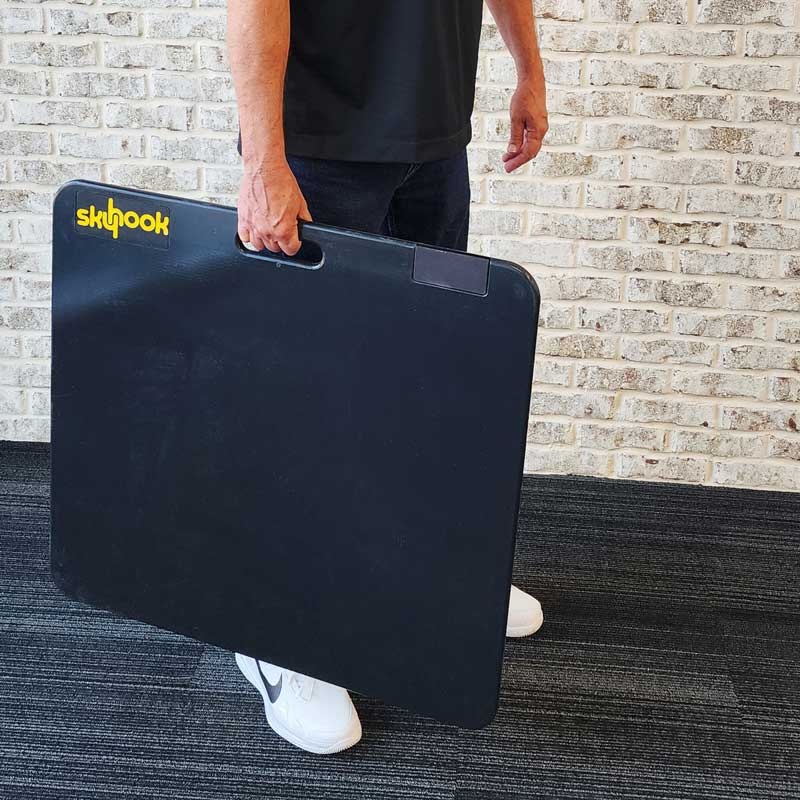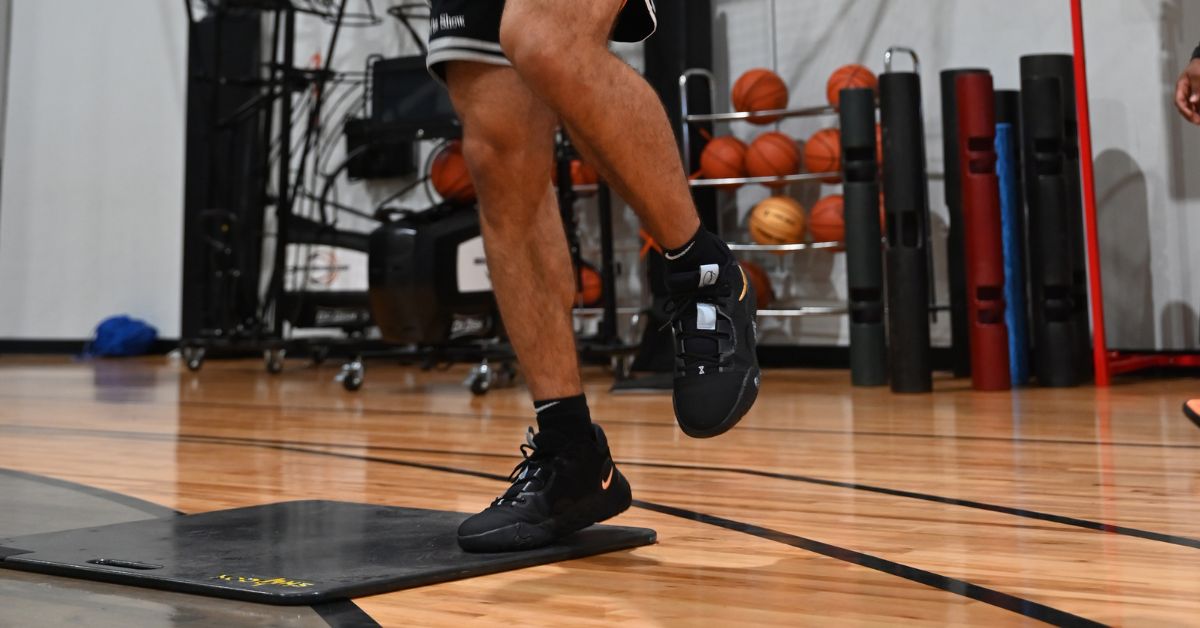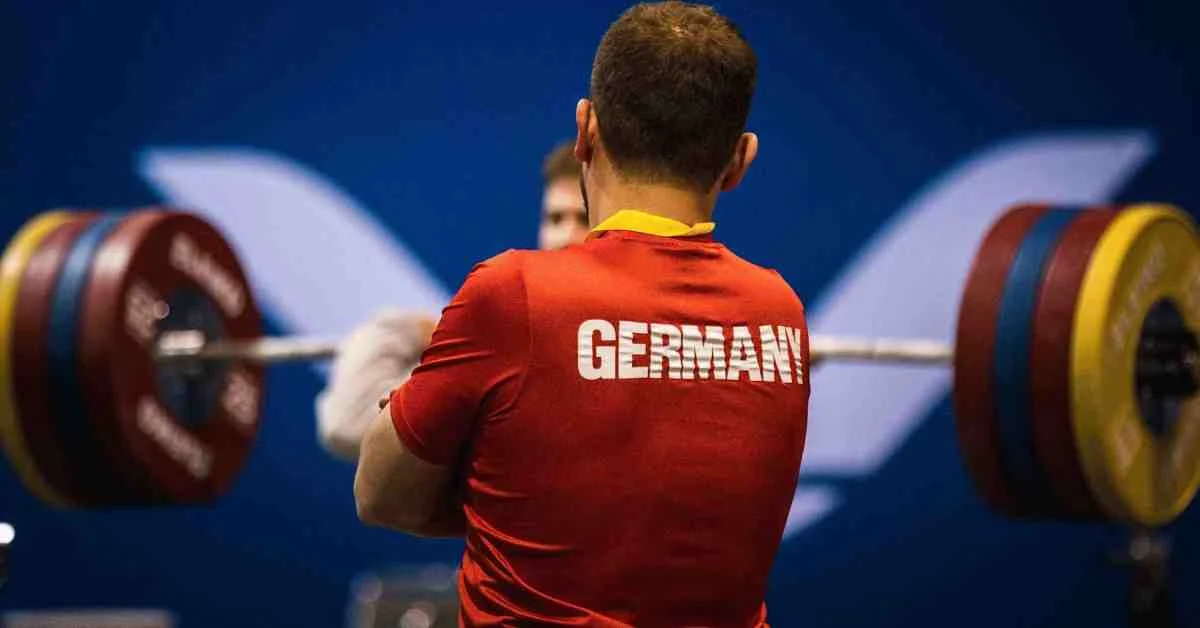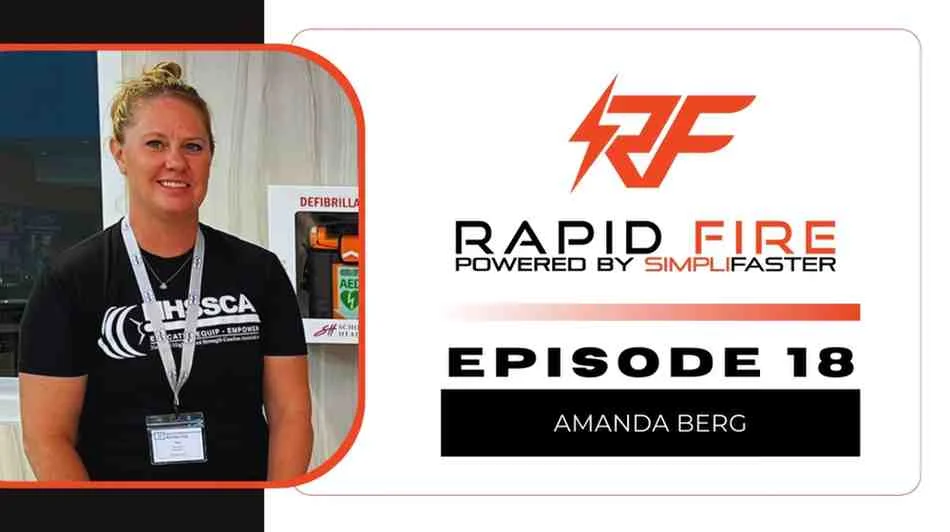Jumping high is a big deal in sports.
Whether you’re into basketball, volleyball, or track, having a good vertical jump can make a difference.
One great tool to help you jump higher is the Skyhook Contact Mat.
Let’s check it out in more detail, seeing how you can get a higher vertical with the Skyhook Contact Mat!
Understanding Vertical Jump Mechanics
To jump high, you need strong legs, quick movements, and good form.
Let’s break down the key components of a vertical jump:
- Strength: Strong leg muscles, especially the quadriceps, hamstrings, and calves, are key for a powerful jump. Exercises like squats and lunges help build this type of strength.
- Power: Power is the combination of strength and speed. Plyometric exercises, like box jumps and jump squats, train your muscles to generate force quickly. Strength vs. power isn’t the same thing, and both are needed to have the best possible vert.
- Technique: Proper jumping technique involves a deep squat, a quick arm swing, and a powerful push-off from the toes.
- Flexibility: Flexible muscles and joints allow for a greater range of motion. Stretching and mobility exercises can improve your jumping ability.
- Balance and Coordination: Good balance and coordination help you control your body during the jump and land safely. Drills that build your balance can improve your vertical jump.
Features of the Skyhook Contact Mat
To get the most out of jump training with the Skyhook Contact Mat, we have to take a look at some of its features:
Design & Portability
The Skyhook Contact Mat is tough and durable.
It’s built to last and can be used on different surfaces, making it a versatile tool for any setting.
It also has a handle, making it easy to carry around.
The mat is big enough for comfortable jumps, measuring 31” x 31”.

Technological Capabilities
This mat connects to your devices through Bluetooth.
It gives real-time data on your jumps, like how high you jump, how long you stay in the air, and how quickly you push off the ground.
It also measures the Reactive Strength Index (RSI), which is a key metric for jump performance.
You can store and analyze your data, create team rosters, and export data easily.
Usability
The mat provides immediate feedback, which helps you see how you’re doing and stay motivated.
It offers free cloud storage to track your progress over time.
It’s compatible with both iOS and Android devices, and there are no extra license fees.
Tracking & Measuring Capabilities
The Skyhook Contact Mat measures several key metrics that are essential for understanding and improving your vertical jump performance:
- Vertical Jump Height: This is the most straightforward measure, indicating how high you can jump. It’s important for sports like basketball and volleyball where jumping ability is key.
- Flight Time: This measures the time you spend in the air during your jump. It’s closely related to jump height and helps you understand how long you can stay airborne.
- Ground Contact Time: This measures how long your feet stay on the ground between jumps. Shorter ground contact times are usually better for explosive strength and power, showing that you can quickly push off the ground.
- Reactive Strength Index (RSI): RSI is calculated using flight time and ground contact time. It’s a measure of explosive strength, indicating how efficiently you can switch from landing to jumping again. A higher RSI means better explosive power and overall jump performance.
By tracking these metrics over time, you can see how your training is paying off and where you might need to adjust your workouts.
Who the Skyhook Contact Mat is For
This mat is great for:
- Athletes who want to jump higher.
- Coaches looking for accurate data to improve training.
- Sports teams that need to track and analyze player performance.
- Fitness fans who want to measure and improve their jump stats.
Setting Up the Skyhook Contact Mat
Setting up the Skyhook Contact Mat is simple.
Follow the start guide to connect it to your device, and make sure it’s on a flat surface for accurate measurements.
Training Techniques Using the Skyhook Contact Mat
To get the most out of your training, try these exercises:
- Jump squats
- Box jumps
- Plyometric drills
Use the real-time feedback to tweak your technique and get better results, and get creative with the type of exercises you track on it.
Make the mat a regular part of your training routine for the best results!
Monitoring & Analyzing Performance
Keep track of your progress with the data from the mat.
Look at your jump heights, flight times, and other metrics to see where you can improve.
Consistent monitoring helps you see long-term gains.
Tips for Maximizing Results
To get the best results, remember to:
- Warm up properly before jumping.
- Use the feedback to adjust your form.
- Avoid common mistakes like overtraining or poor technique.
Conclusion
The Skyhook Contact Mat is a fantastic tool for anyone looking to improve their vertical jump.
It’s easy to use, provides valuable data, and can help you see real improvements.
Check out the Skyhook Contact Mat and start tracking your progress today—give us a call if you need help with it!






